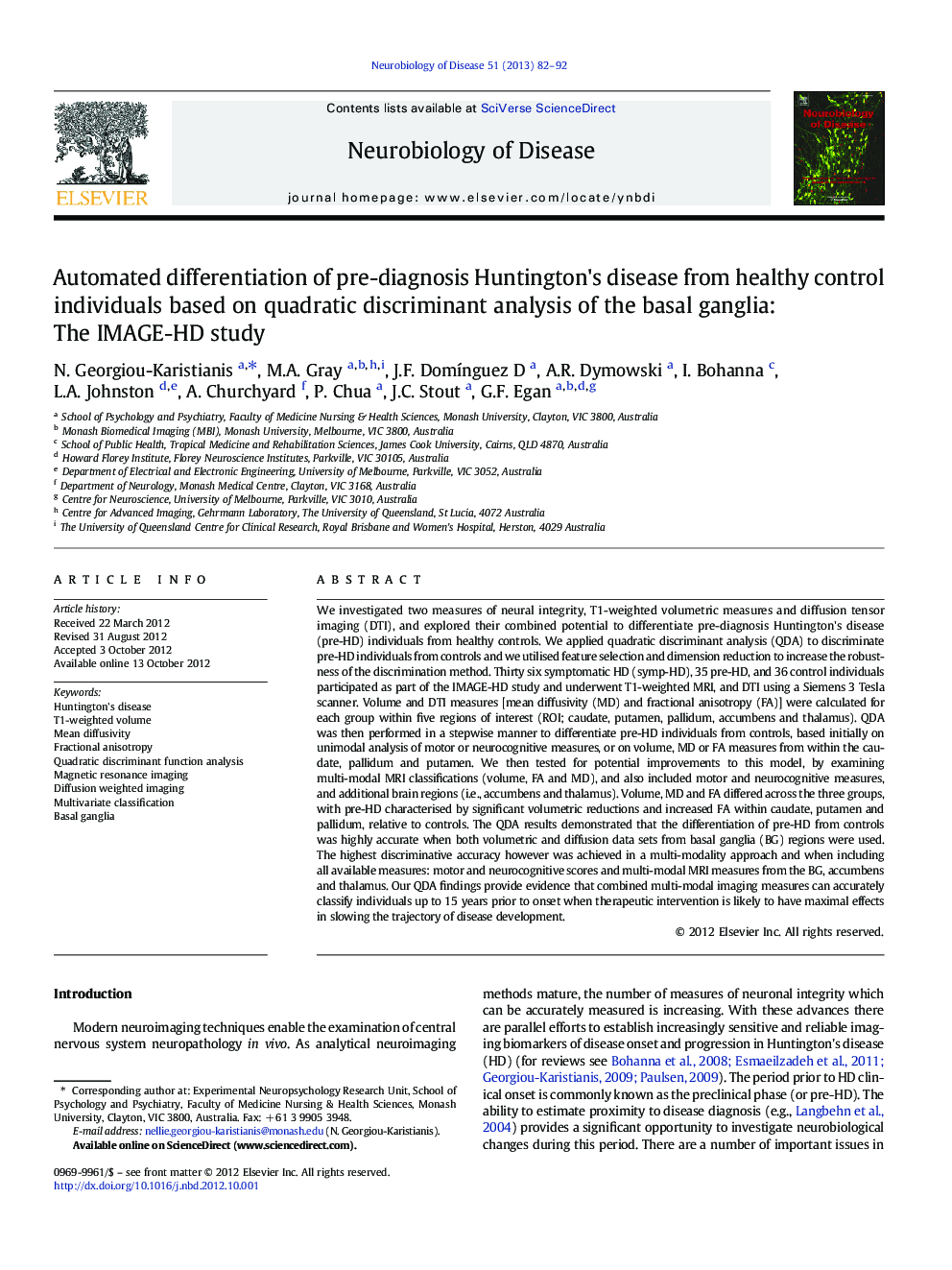| کد مقاله | کد نشریه | سال انتشار | مقاله انگلیسی | نسخه تمام متن |
|---|---|---|---|---|
| 3069435 | 1580673 | 2013 | 11 صفحه PDF | دانلود رایگان |

We investigated two measures of neural integrity, T1-weighted volumetric measures and diffusion tensor imaging (DTI), and explored their combined potential to differentiate pre-diagnosis Huntington's disease (pre-HD) individuals from healthy controls. We applied quadratic discriminant analysis (QDA) to discriminate pre-HD individuals from controls and we utilised feature selection and dimension reduction to increase the robustness of the discrimination method. Thirty six symptomatic HD (symp-HD), 35 pre-HD, and 36 control individuals participated as part of the IMAGE-HD study and underwent T1-weighted MRI, and DTI using a Siemens 3 Tesla scanner. Volume and DTI measures [mean diffusivity (MD) and fractional anisotropy (FA)] were calculated for each group within five regions of interest (ROI; caudate, putamen, pallidum, accumbens and thalamus). QDA was then performed in a stepwise manner to differentiate pre-HD individuals from controls, based initially on unimodal analysis of motor or neurocognitive measures, or on volume, MD or FA measures from within the caudate, pallidum and putamen. We then tested for potential improvements to this model, by examining multi-modal MRI classifications (volume, FA and MD), and also included motor and neurocognitive measures, and additional brain regions (i.e., accumbens and thalamus). Volume, MD and FA differed across the three groups, with pre-HD characterised by significant volumetric reductions and increased FA within caudate, putamen and pallidum, relative to controls. The QDA results demonstrated that the differentiation of pre-HD from controls was highly accurate when both volumetric and diffusion data sets from basal ganglia (BG) regions were used. The highest discriminative accuracy however was achieved in a multi-modality approach and when including all available measures: motor and neurocognitive scores and multi-modal MRI measures from the BG, accumbens and thalamus. Our QDA findings provide evidence that combined multi-modal imaging measures can accurately classify individuals up to 15 years prior to onset when therapeutic intervention is likely to have maximal effects in slowing the trajectory of disease development.
► We examined T1 volumetric and diffusion weighted MRI imaging in HD.
► Investigation focused on caudate, putamen, pallidum, accumbens and thalamus ROIs.
► Volume, MD and FA differentiated presymptomatic and symptomatic HD participants.
► Multivariate classification differentiated presymptomatic HD from control participants.
► Combined motor, neurocognitive and multi-modal MRI measures offered the best accuracy differentiation in presymptomatic HD.
Journal: Neurobiology of Disease - Volume 51, March 2013, Pages 82–92